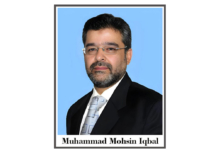January 22, 2024, a date now etched in the annals of Indian history, unfolded as a momentous occasion for the Hindu India. On this day, Indian Prime Minister Narendra Modi proclaimed it as more than just a mere mark on the calendar; rather, he heralded it as the onset of a new epoch. The Indian PM spoke of the dawn of “Ram Rajya” in India, a concept steeped in Hindu divinity that starkly contradicts the secular ethos enshrined in the country’s constitution. The cornerstone of January 22’s significance lay in the consecration of an idol of Ram, one of Hinduism’s revered deities, at a newly erected temple in Ayodhya. This small town in Uttar Pradesh holds profound religious significance for Hindus, who believe it to be the birthplace of Lord Ram. However, the construction of the Ram temple stands on contentious grounds—the site where the Babri Masjid, a Mughal-era Mosque, once stood. Its demolition in 1992 unleashed sectarian violence, claiming thousands of lives, and fracturing the nation along religious fault lines. In 2019, the Supreme Court’s verdict, while acknowledging the mosque’s unlawful destruction, sanctioned the construction of the Ram temple at its former site. This decision, criticized for its perceived injustice, underscored a disconcerting shift in India’s secular fabric.
The construction and consecration of the Ram Temple in Ayodhya present a stark deviation from the constitutional principles of India. Article 25 to 28 of the Indian Constitution explicitly advocate for freedom of religion and the secular nature of the state, ensuring that the government remains unbiased towards any religious community. By endorsing and facilitating the construction of a temple dedicated to a specific Hindu deity on the site of a historically significant mosque, the government’s actions signal a preference for Hinduism over other religions. This preferential treatment not only undermines the secular fabric of the state but also sends a troubling message to religious minorities about their place in Indian society. Moreover, the Supreme Court’s verdict allowing the construction of the temple, while acknowledging the mosque’s unlawful destruction, sets a concerning precedent by prioritizing the interests of the Hindu majority over the rights and freedoms guaranteed to all citizens regardless of their religious affiliation. In essence, the Ram Temple project not only violates the spirit of India’s secular constitution but also threatens the foundational principles of religious freedom and equality before the law.
For proponents of Hindutva, the Ram temple epitomizes national pride and resilience, a symbol of victory over perceived historical injustices inflicted by Muslim rulers. Conversely, for India’s Muslim minority, it symbolizes marginalization and exclusion from the country’s socio-political landscape. The ceremonious inauguration of the Ram temple, marked by extravagant celebrations and political grandstanding, epitomized the ascendancy of majoritarianism in Indian politics. It underscored Prime Minister Modi’s political acumen, positioning him as the vanguard of Hindu supremacy in the nation’s narrative.
However, the festivities surrounding January 22 only served to exacerbate communal tensions, with reports of violence and targeted attacks against minority communities across the country. Despite assurances to the contrary, the spectre of communal discord looms large over India’s socio-political landscape. The consecration of the Ram temple represents a pivotal juncture in India’s trajectory—a nation grappling with the confluence of tradition and modernity, secularism, and sectarianism. It underscores the imperative for safeguarding the principles of pluralism and religious tolerance enshrined in its constitution. Modi’s transformation from a democratically elected leader to a symbol of divine authority epitomizes the erosion of India’s secular ethos—a disconcerting reality for those advocating for inclusivity and social harmony. As India navigates its future, the events of January 22 serve as a sobering reminder of the delicate balance between religious fervour and constitutional principles. The Ram temple stands not only as a monument to faith but also as a testament to India’s evolving identity—a nation at the crossroads of tradition and modernity, unity, and division.
In the wake of January 22, the onus lies on India’s leadership to uphold the values of secularism and inclusivity, fostering a society where diversity is celebrated rather than vilified. The Ram temple, while a symbol of religious fervour, must not overshadow the enduring spirit of pluralism that defines the ethos of Indian Constitution. As the dust settles on the fervour of January 22, India stands at a critical juncture—a nation grappling with the complexities of its past and the uncertainties of its future. In the pursuit of a more inclusive and harmonious society, it is imperative that the voices of all its citizens, irrespective of faith or creed, find resonance in the corridors of power. Only then can India truly justify its claim of a democratic, pluralist, and secular country in an increasingly polarized world.







